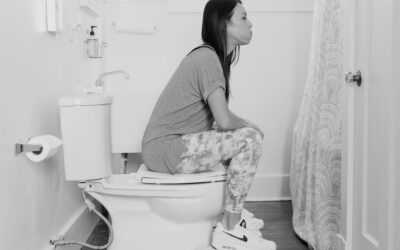Kegels. We all know the word. But do we really know what it actually, truly MEANS to do a kegel, and why do we even care?
Wait – should you even be doing kegels?
Kegels became the blanket approach for EVERYONE who reported any sort of bladder or bowel or pelvic dysfunction.
Pain with sex? Kegel. Leaking urine? Kegel. Having increased urges and going to the bathroom all the time? Kegel. Back pain? Kegel. Pregnant? Kegel FOR SURE. Want a tight vagina (cringing as I’m typing this)? Kegel. And the list goes on.
However, I am here to tell you that kegels are not the answer to everything, and although they are appropriate for some people, they are not appropriate for all, and should not be thought of as such.
What is a kegel?
A kegel is a contraction of the pelvic floor muscles, which sit at the bottom of your pelvis. These muscles lie like a basket, or a hammock, and attach front to back (pubic bone to tailbone) and side to side (sit bone to sit bone). Within these muscles, we find openings.
In females, we have the rectum, the vagina, and the urethra. In men, we have the rectum and the urethra follows the length of the penis and is past the pelvic floor, where it ends at the tip of the penis.
The pelvic floor has three main functions including holding us and our organs up against gravity, aiding in orgasm and allowing vaginal penetration for women, and continence (keeping us dry).
In a perfect world, as the bladder and rectum are filled with urine and stool, the pelvic floor muscles “turn on” to close the sphincters that hold in the urine and stool. We get the signal to either head to the loo to pee or grab our phones for some reading material if we are going in for a longer stretch.
The pelvic floor muscles then lengthen, or relax, and the bladder muscle (the detrusor) pushes urine out through an open urethra, all thanks to a relaxed and lengthened pelvic floor.
Who might need to do kegels?
If you have a weak pelvic floor due to childbirth or another reason, you may need to perform gentle kegels to initiate regaining muscle strength and function. If you aren’t sure, read on to see how you can check yourself for strength.
How to check if you’re doing a kegel correctly
To check if you’re contracting and relaxing your pelvic floor correctly, consider doing an internal exam on yourself. This is similar to what a pelvic floor PT would check in person.
-
Lie down on your back or side (or stand in the shower if it’s more convenient).
-
Insert a clean finger to your first knuckle near “6 p.m. position” (meaning if the vagina opening was a clock, noon is toward the urethra and clitoris, 6 p.m. is toward the anus and tailbone).
-
From this depth, check your ability to kegel. Try to contract and relax and see if you can feel a close (contract) and open (relax).
-
Next, enter further into the vagina and hook your finger onto a side – usually towards “3:00” or “9:00” position. You should feel your finger resting on a ledge (the pelvic floor being like a bowl).
-
In the 3:00 and later in the 9:00 position, check your ability to kegel. Can you feel your finger get lifted up and in with the contraction? That’s a good sign! Can you feel yourself relax your muscles fully after your kegel? That’s also a good sign!
If you don’t feel anything at all, or barely feel a lifting/pulling your finger in with your contraction or you feel yourself pushing your finger out, you may benefit from following up with a pelvic floor PT for further feedback and instruction.
Wait, you might need to check this too!
-
Your ability to contract and relax with your breathing (exhale = contract, inhale = relax).
-
Quick contractions – fast 1-2 seconds contract and relax.
-
Endurance/long hold contraction. How long can you hold a contraction for while still breathing? 5 seconds? 10 seconds? More?
-
Your ability to vary the intensity of a contraction. Can you contract 25% effort? 50%? 75%? Max effort? What do each of those feel like?
-
Your ability to contract with a cough.
How to check externally
Use a finger to feel just inside your sit bones or at your perineum (between vagina and anus) and see if you can feel your muscles tighten.
We’re always here
If you’re still struggling and want more feedback on how to properly perform a contraction or relaxation of the pelvic floor muscles reach out! Or, if you feel confident in your ability but want more instruction about how to fit in kegels to real life, exercise routines, and more we can help with that, too!
__________________________________________________________________________________________________________
Interested in more tips on how to prevent or overcome Pelvic Floor Problems?
Download this free guide for some simple, do-able, totally-not-weird tips to take better care of your down there.
_________________________________________________________________________________________________________
Some links may be affiliate links. The products we recommend are products we use or recommend to clients.





